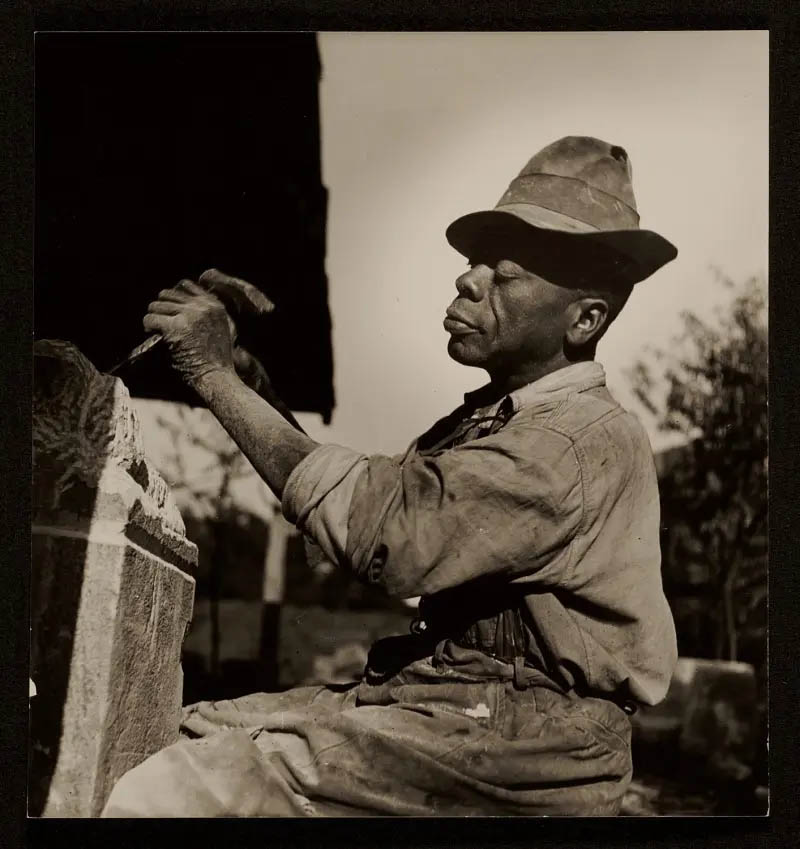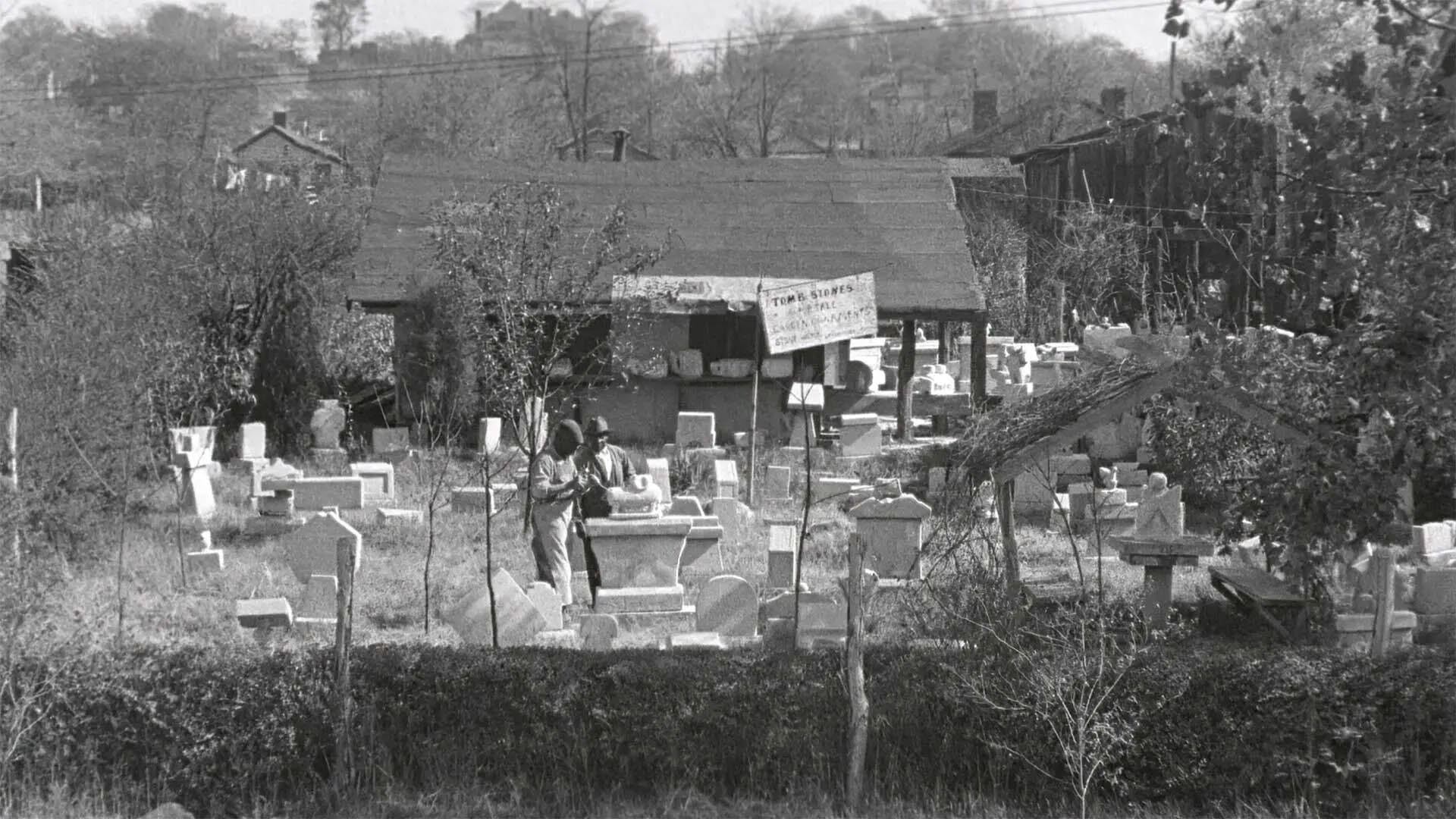This article was originally published in Maryland Today.
A century ago, a self-taught artist by the name of William Edmondson sat in his Nashville backyard, using a railroad spike and a hammer to chisel yard ornaments and sculptures for headstones. He later became the first African American to have a solo show at the Museum of Modern Art.
Today, the site of his home and workshop in the historic Black neighborhood of Edgehill is under a basketball court.
Georgeanne Matthews, an assistant professor of architecture at the University of Maryland, is well-versed in the literal covering up of the legacy of the groundbreaking artist: Her family has lived in Nashville for at least four generations.

She’s now part of an effort led by the Friends of the William Edmondson Homesite Park & Gardens that is fighting to preserve, protect and enhance the site and the surrounding area to establish the William Edmondson Cultural Arts Center, Library and Museum.
The site includes a neighborhood park featuring a community garden, a playground, walking trails and picnic pavilions that abuts a police station and an elementary school. In 2018, the city of Nashville announced its intention to sell the land for development, but a community outcry led the city to cancel the sale, and the group has since been trying to gain city government support and funding for its vision.
"What's happening now, which is happening with every major city, is gentrification," Matthews said. "This site, in particular, is kind of at the heart of this. The mid-century modern (school) building has a beautiful park in front of it, and it's one of the last remaining open spaces in this neighborhood. Developers are chomping at the bit to get it. And that's why I'm interested in this project."
Edgehill is located at the foot of Fort Negley, a huge, stone fortification that Union troops hastily erected after their capture of the Southern city; it was built largely by African Americans fleeing slavery who had set up camp in the area and were either forced to work or did so believing it would earn them a ticket out of servitude. After the Civil War, their descendants remained in the area, which grew into a thriving community, home to many Black-owned businesses and churches as well as groundbreaking leaders, such as Moses McKissack, who founded the nation's first Black-owned professional architectural firm, and DeFord Bailey, a blues and jazz harmonica player who performed at the Grand Ole Opry.
Matthews' family owned a funeral home in the community, and she lived in a house in Edgehill from 2004 to 2010, just one block from Edmondson's home. He drew inspiration from his environment to create his art, sculpting squirrels and birds as well as community leaders, neighbors and former co-workers. He died in 1951, and that decade, the city cleared the property to make way for the Murrell School, and later evicted residents on neighboring land for public housing that was never built.

According to the nonprofit Edmondson Homesite Park’s master plan, the former location of his house will be transformed "into a landscaped pedestrian plaza, with open-air pavilions, historic interpretive displays, and outdoor spaces for people to relax and experience the natural sights and sounds that inspired Edmondson to create his limestone masterpieces." The goal is to designate the area as a historic landmark and show how historic buildings can be adaptively reused.
Some of the organization’s beautification efforts over the recent years include the replacement of an old playground and the construction of a youth soccer pitch. They also planted perennial gardens and over 75 trees in the area, according to one of the organization’s vice presidents, Mark Schlicher.
“We also have the Edgehill Heroes Arboretum Program, which honors historical figures who have ties to Edgehill,” he said. “We honor them with medallions that are hung around trees and we have roughly 20 of those medallions at the moment.”
Matthews, whose work focuses on community-based architecture, began working with the organization because her mother serves on the board. She started the initial drawings and consultation for a schematic architectural design for the proposed cultural arts center, library and sculpture garden with graduate students at Catholic University in May 2020, and she is continuing her work at UMD with her students.
For the design’s next steps, a graduate student in architecture, Samantha Jamero '21, will develop a digital walkthrough model of where Edmondson's home previously stood.
“Georgeanne is just so brilliant and generous with her time, expertise and involving her students in meaningful projects,” Schilicher said. “We're just so grateful. This is the type of advocacy and the type of development of a civic space that couldn't be done without someone like her.”
Matthews believes the site’s history is an important piece to preserve Tennessee's African American history.
"It's a small story of one little man, but it's a bigger story," Matthews said. "If you take this 25 acres away, the community has no anchor, and that is the story of America. If you don't fight for sites like this, they will disappear. And for me, as an architectural professional, this is a part of service. This is what we do."

